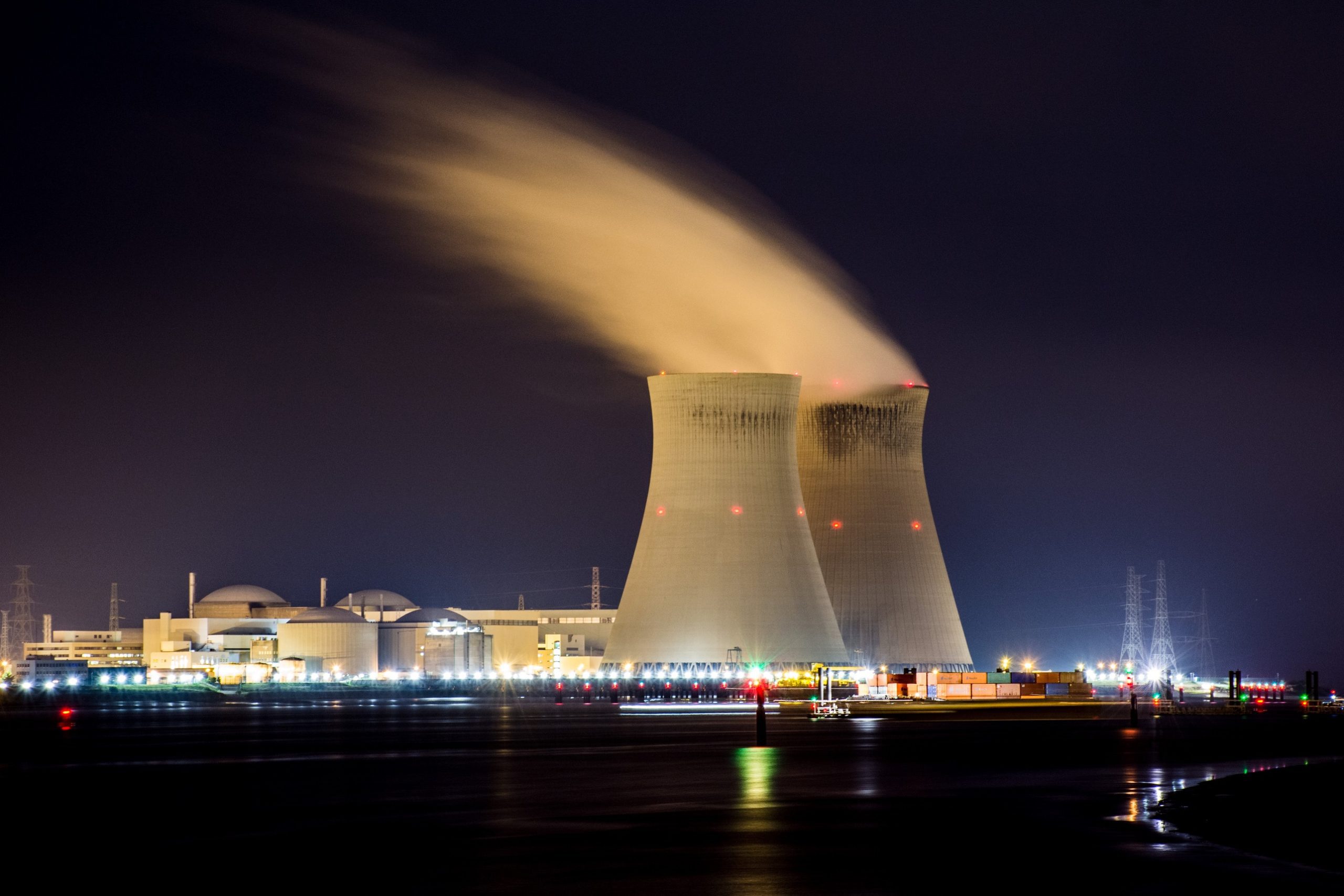A KIVI energy committee advises a new cabinet to keep looking into alternatives to sun and wind, such as nuclear power. What do TU Delft professors think?
Nuclear power plant Doel in Antwerp. (Photo: Nicolas HIPPERT / Unsplash)
“This is lobbying of course,” responds Prof. Peter Palensky (Intelligent Electrical Power Grids at the Faculty of EEMCS) to the paper from the Royal Dutch Engineers Association (KIVI). “I don’t know who is pulling the strings here, but this is clearly a political stance and politicians recognise it as such.”
“KIVI’s call was my suggestion,” acknowledges Prof. Jan Leen Kloosterman, Professor of Reactor Physics at the AS faculty. “Last year, the Government announced its intention to include nuclear energy as an option in the energy mix. I say in that case, you also need to know how to maintain the knowledge infrastructure and train nuclear physicists.”
Delta spoke with both professors about the option and necessity of nuclear energy in a CO2 free electricity supply as envisaged for 2050. An overview in four questions.
1. Is it still possible to finance the construction of a nuclear power plant?
Palensky does not think that any insurance company would be prepared to insure a nuclear power plant anymore because the consequences of a failure are too big. He also thinks that nobody would invest in the construction of nuclear power plants because they would not be able to earn their money back because of stiff competition from cheap sources of electricity like sun and wind. “Nuclear power is really over.”
Kloosterman sees that 60 nuclear power plants are under construction worldwide, some of them in Europe. But financiers charge high interest rates because of the risk of changing social consensus, and because the plants may not produce for a long enough period to earn back the investment. However, if a government finances the loan, the interest rate could be lowered and that would make nuclear energy a lot cheaper. So, yes, building a nuclear power plant is still an option.
2. Does nuclear energy reduce the price of electricity or make it more expensive?
“You cannot compete with energy that drops from the sky for nothing and that you can harvest with techniques that also cost almost nothing,” says Palensky. “Like it or hate it, the reality is that the market is ruthless. The cheapest will wipe out the rest. We have to accept that.”
Kloosterman quotes studies on the role of nuclear energy in a sustainable energy supply by the Copernicus Institute in Utrecht and by MIT. Both studies show that the costs are lower in a system with rather than without nuclear energy. The explanation is that the energy infrastructure needs much more than just solar panels and wind power if it is to establish a stable renewable energy supply. These considerations include aspects such as overcapacity, networks and storage facilities, which, according to these studies, have higher costs than a nuclear power plant.
3. Do we need nuclear power plants for a stable power grid?
“That is an outdated idea,” says Palensky. He argues that it assumes a power grid fed by heavy turbines, but this is now rapidly changing. Energy comes from the sun and wind. Solar, wind and do need things like batteries, hydrogen reserves and flexible loads to create a stable power supply, but these are being worked on. Equally, managers are now planning and building stronger international grid connections. “If you still have an old nuclear power plant, you can run it for a few more years. The same goes for old coal and gas fired plants where you can keep the generators and just let them spin without powering them. The plants will help stabilise the grid. Old nuclear power plants can still be used, but we don’t need new ones.”
4. Should nuclear power be part of scenarios for a sustainable power supply?
Palensky answers with a comparison. “That’s like going back to the horse and carriage if you want to decarbonise transport.” He continues. “That’s the wrong direction. We now have better technology that is also sustainable and this goes for the power supply too. We know the theory and now we are forced to put it into practice because of our decarbonisation goals. So now is the right time.”
Kloosterman is more cautious. “My point is that you want to reduce the risk that having only solar and wind will not deliver a reliable and renewable power supply in 2050. If you bet everything on one horse and it doesn’t work out, you don’t have any other alternatives. We have to avoid this. But if Palensky’s scenario without nuclear power comes true, I would be happy. That would be good news for everyone.”
Do you have a question or comment about this article?
j.w.wassink@tudelft.nl


Comments are closed.